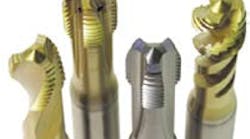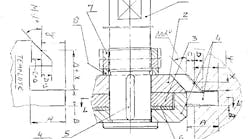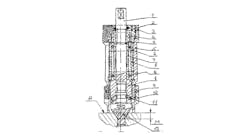The method of removing a broken tap depends on how the tap broke, its size, and the size and shape of the workpiece it broke off in.
If a tap breaks off laterally and part of it is sticking out far enough, grab it with vise grips or pliers and twist it out. When there is not enough to grab, use a tap extractor to twist it out.
I don’t recommend welding a screw to the tap because the heat will make the tap more brittle, and the weld spatter can be an issue. Easy outs don’t work for taps, only for screws and bolts.
Most often, taps shatter inside workpieces. When this happens, the size and shape of the workpiece come into play.
If available, a portable EDM and electrode work best. Refrain from trying to drill out a tap. The drill point will deflect to the softer workpiece material and cause damage.
I would try a center-cutting carbide endmill with a smaller diameter than that of the tap’s minor diameter. Secure the workpiece in a milling machine vise and use a high spindle rpm and a slow peck feed, along with compressed air to remove debris.
When using a Bridgeport-type knee mill to do this, don’t feed the cutter with the machine’s quill. Instead slowly peck feed the table up. For a CNC mill, manually peck feed the cutter with the machine’s “handle” function.
Workpieces too large for a mill or EDM will require using a Dremel-type hand tool equipped with a carbide bit to grind out the tap. No matter what tap-extraction method is used, tweezers or a hard sharp pointed object is needed to dig out the small teeth of the tap after its core is removed.
Online name:williamshook2003 www.forums.americanmachinist.com





